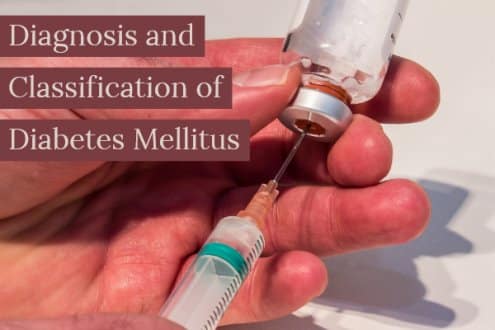Diabetes Mellitus can be defined as a condition that causes high blood sugar levels. It can have a variety of causes and can be divided into two major categories: type 1 and type 2 diabetes mellitus.
Classification of diabetes
In the past, medical professionals have named them “insulin-dependent” and “insulin-independent” diabetes, respectively, but these names are no longer valid as continued research has revealed that either of these types of diabetes require insulin. One key difference between the two types of diabetes mellitus is that the type 1 variant usually has a complete or near-complete lack of insulin production. This is the main reason patients require insulin therapy early on in their diagnosis.
Type 2 diabetes mellitus, on the other hand, usually prompts insulin resistance early on in the disease process. The tissues in these patients are resistant to the insulin hormone. Because of this, sugar uptake is not facilitated, and blood sugar levels remain high. It is only later on in the disease that the insulin secreting capacity from their pancreas decreases to levels that require insulin injections.
Diagnosing diabetes
Type 1 diabetes mellitus typically afflicts individuals in their youth (i.e. <30 years old) and can be much more fatal during diagnosis. These adolescents, or young adults can suffer from a condition called diabetic ketoacidosis when they do not get their typical insulin dose. They may present to the medical professionals with this emergency condition without prior knowledge of their diagnosis.
On a related note, type 1 diabetes mellitus is regarded as an autoimmune disease, which means that the patient’s own antibodies attack the insulin producing parts of the pancreas. This predisposes them to other autoimmune disease such as Grave’s disease, Hashimoto’s thyroiditis, Addison’s disease, vitiligo, and pernicious anemia.
Type 2 diabetes mellitus are found more in adults >40 years old that are obese and have a sedentary lifestyle. They can sometimes present late in their disease process, where damages to their blood vessels have already occurred, which can manifest as diseases such as a stroke, or heart attack. Other times, they may have been diagnosed during routine health checkups. This is due to the subtler symptoms of this variant of diabetes mellitus, where many patients may not notice increased thirst, hunger, urination, or decrease in weight.
Diagnosis is through measuring your blood sugar levels. Medical professionals can diagnose if levels of your fasting blood sugar levels exceed a certain threshold. Additionally, they can also measure your non-fasting blood sugar levels and correlate that with your symptoms, or they can measure your HBA1C, which is the level of red blood cells that are coated with sugar. To differentiate type 1 from type 2, laboratory studies of the chemical components that cause autoimmunity is measured (i.e. pancreatic islet autoantibodies and C-peptide).


